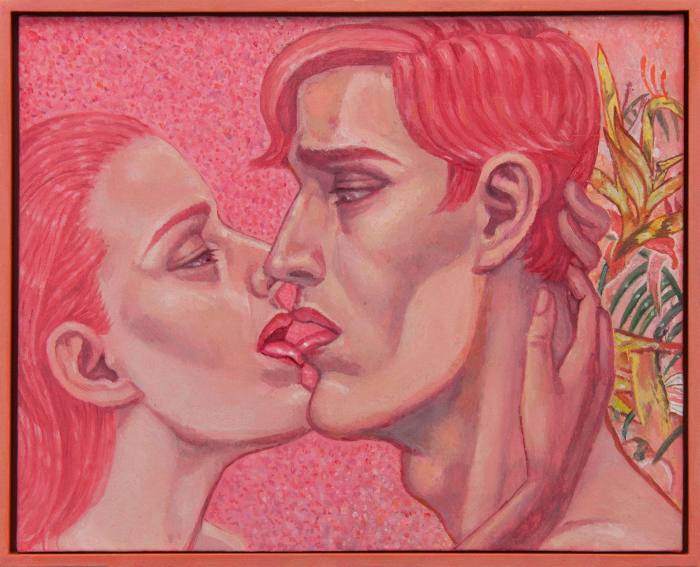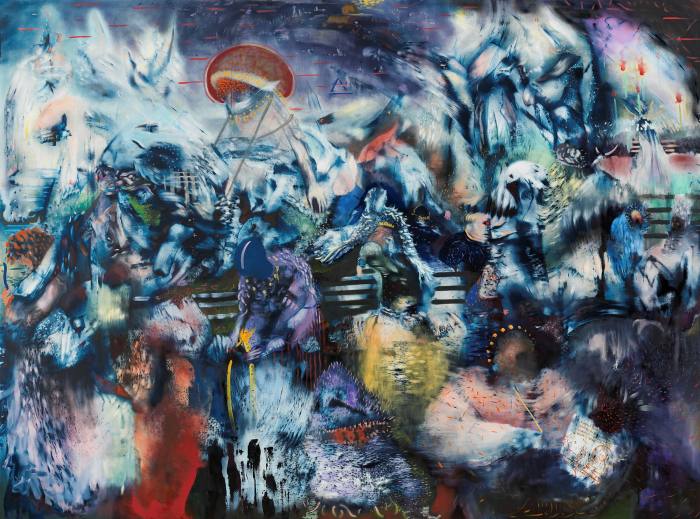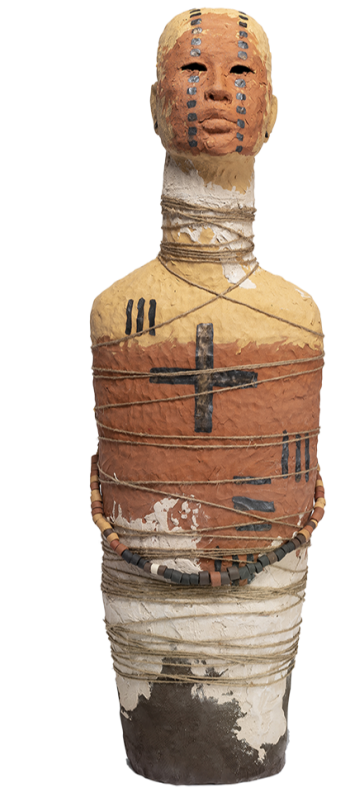Art Basel Miami Beach opens in a younger, richer and more technological city
Move over snowbirds and retirees. When Art Basel opens in Miami Beach this week, there will be a new audience in town ready to welcome its return to real life.
While the coronavirus pandemic has taken a heavy toll on Florida, efforts to attract rapidly evolving financial, legal and tech industries to the low-tax Sunshine State have paid off. That’s thanks, in part, to Miami Mayor Francis Suarez, a corporate lawyer who pushed the city’s appeal through catchy speeches, billboards and social media campaigns. Companies that have moved include New York-based hedge fund group Blackstone, which has opened a tech-focused office in downtown Miami.
Suarez’s campaigns have gone well with part of Miami’s existing collecting community. “He did an incredible job as an ambassador. There is tremendous growth in Miami and South Florida, which has been a boom for its economy and real estate, ”said Jorge Pérez, real estate developer, philanthropist and major collector of Latin American and contemporary art. international. As a result, he says, “the population is now much younger.”
‘Pop Coroa’ (1966) by Antonio Henrique Amaral © Courtesy of the artist and Mitchell-Innes & Nash
Little Haiti-based gallery owner Nina Johnson, who has a booth at the Nada art fair this week (December 1-4), notes an influx of families with young children over the past year. “We’ve put together a guide, not just on art galleries, but with recommendations for schools, restaurants, places to go and listen to music,” she says.
Miami’s rejuvenation has encouraged art galleries to engage more with the city than their usual week at the Art Basel fair. “Miami has changed a lot,” says Joséphine Nash, director of the Mitchell-Innes & Nash gallery. “There is still a very diverse community, but now young professionals and large companies are at the forefront. Even people who are just visiting stay longer, due to the ability to work remotely. “
Last winter, his New York gallery opened a three-month pop-up in town, in place of the canceled Art Basel fair, and decided to repeat the project this year while exhibiting at the fair. Join them at the show and in the Design District from late November to late January, the Goodman Gallery (South Africa, London) and Galerie Lelong (New York, Paris).
‘Kiss VII’ (2018) by Soshiro Matsubara © Courtesy of the artist, Union Pacific & Hannes of Schiefe Zähne
Art Basel Miami Beach will also feel refreshed. Some mainstays don’t return after the pandemic-imposed hiatus – a couple have gone bankrupt, some are consciously cutting back on art fairs and there’s the usual churn. The organizers have relaxed some of their rules to reflect the more varied circuits of the art market. For example, galleries no longer need to have a permanent space to be accepted into the fair.
Newcomer galleries are rushing to be in the United States, especially as Covid-19 travel restrictions meant there were fewer American visitors to other revived in-person fairs. “We have already met American customers who have not traveled to Europe when we showed Nada [in Miami] in 2019, ”says Nigel Dunkley, co-founder of the Union Pacific gallery. “Now there are health issues and restrictions as well, so the split is even more evident.” His gallery has a booth at Art Basel Miami Beach filled by Japanese ceramist Soshiro Matsubara, whose installation will include lampshades and a rug, as well as a few paintings, all based on the tumultuous affair between Austrian artist Oskar Kokoschka and Alma Mahler.
‘The Changing Past’ (2021) by Ali Banisadr © Courtesy of the artist and Victoria Miro. Photo: Adam Reich
Other younger, in-demand and more socially aware artists are joining the fray. Victoria Miro has a new painting by Iran-born Ali Banisadr, “The Changing Past” (2021), which shows how, throughout history, cultures have collapsed to accommodate new beliefs. The gallery also features works by auction sweetheart Flora Yukhnovich, who explores the two-pronged, promiscuous and revenge personality of the Roman goddess Venus. The Jack Shainman Gallery features Native American artist Rose B Simpson, whose sculptures address the “crippling detachment of our creative selves through the ease of modern technology,” the artist says.
Such technology will be hard to avoid in Miami this week, as relatively unknown artists and brands in 2019 make their presence felt. At the fair, curator-reseller turned non-fungible token (NFT) artist Kenny Schachter partnered with Galerie Nagel Draxler to deliver a 14-foot-tall digital booth designed by Zaha Hadid Architects. His featured crypto artists include Kevin Abosch, Olive Allen, and Rhea Myers. Schachter worked with the same gallery at the Swiss Art Basel fair in September, but, he says, it was a “tiny booth” compared to what will be at the Miami fair: “This week will be night time. release of NFT within the traditional world of art.
“Considerati A” (2021) by Rose B Simpson © Courtesy of the artist and Jessica Silverman, San Francisco and Jack Shainman Gallery, New York
Just outside the fair, new sponsor Tezos – a blockchain platform – will feature an exhibit of NFT, as well as the ability for visitors to create and create a self-portrait on location, courtesy of the German artist Mario Klingemann. Another platform, SuperRare, will feature large-scale augmented reality works at the Palais des congrès, with an auction taking place during the show. And sure enough, Beeple (aka Mike Winklemann), the artist who rose to fame when his NFT was sold at Christie’s for $ 69 million in March, is in town. He participates in a conference called “15 minutes or forever? Art in the NFT Age ”at The Bass Museum on December 1.
Marc Spiegler, director of Art Basel, downplays the impact of technology on the look and feel of the Miami Fair in person. He acknowledges, however, that “the kinetic energy in the city is much higher than it was in 2019”, and asserts that there will be “dozens, if not hundreds, of more potential collectors who will now be able to drive. rather than fly to the fair “. . . This may be the first trade show where we see the contours of the impact of the digital shift catalyzed by the pandemic. “
2-4 December, artbasel.com


